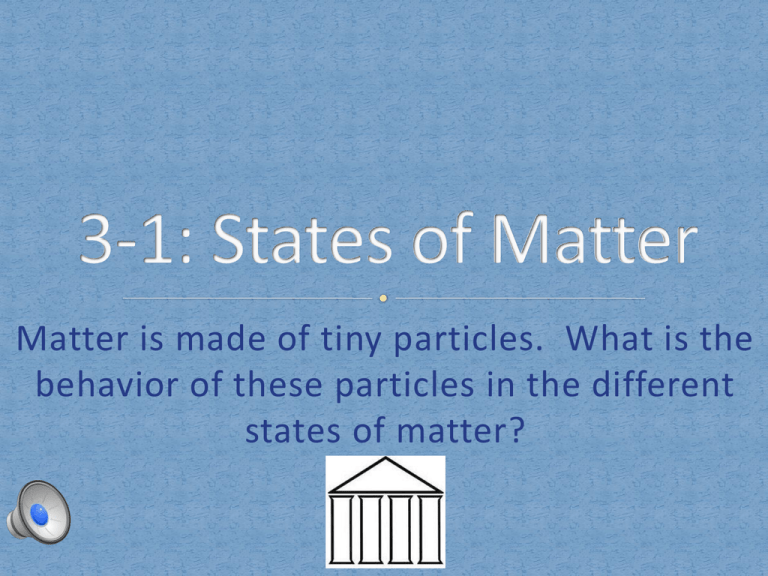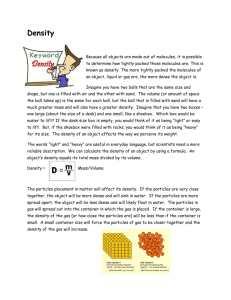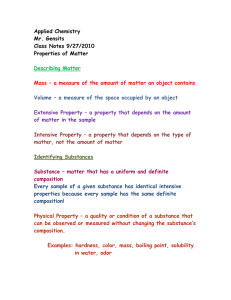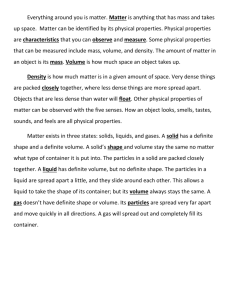Section 1
advertisement

Matter is made of tiny particles. What is the behavior of these particles in the different states of matter? Which is the easiest to hold in your hands? small rock 100mL of water helium from a balloon Which is the most difficult to hold in your hands? Science Standard 8.3.e: Students know that in solids the atoms are closely locked in position and can only vibrate; in liquids the atoms and molecules are more loosely connected and can collide with and move past one another; and in gases the atoms and molecules are free to move independently, colliding frequently. solid: has definite shape and a definite volume. crystalline solid: solids that are made up of crystals. amorphous solid: solids in which particles are not arranged in a regular pattern. liquid: has a definite volume but no shape of its own. fluid: substance that flows (liquid & gas). surface tension: the result of an inward pull among the molecules of a liquid that brings the molecules on the surface closer together. viscosity: a liquid’s resistance to flowing. gas: has no definite shape or volume. The particles in a solid are closely locked in position and can only vibrate. Let’s act like a solid! SOLID What would happen if the jar the solid is contained inside broke? The shape of the solid would stay the same if the jar broke. Would the volume of the solid change if it were moved to a larger container? The volume of the solid would stay the same if it were moved to another container. Quartz is an example of a crystalline solid because its particles are arranged in a regular pattern. Butter is an example of an amorphous solid because it is not arranged in a regular pattern. The particles in a liquid are more loosely connected and can collide with and move past one another. Let’s act like a liquid! LIQUID What would happen if the jar the liquid is contained inside broke? The liquid would spread out into a puddle because the particles flow around each other. Would the volume of the liquid change if it were moved to a larger container? The volume of the liquid would stay the same if it were moved to another container. In gases, the atoms and molecules are free to move independently, colliding frequently. Let’s act like a gas! GAS What would happen if the jar the gas is contained inside broke? The shape of the gas would continue to change and spread outward because the particles in a gas move apart in many different directions. Would the volume of the gas change if it were moved to a larger container? The volume of the gas would increase because it would spread to fill the container. SURFACE TENSION Surface tension causes water to act like a form of skin when droplets form on a surface. Liquids with high viscosity flow slowly (honey). Liquids with low viscosity flow quickly (water). What kind of solid is salt? crystalline What kind of solid is chocolate? amorphous What property of liquids causes water form droplets? surface tension Name a liquid with a high viscosity? see next slide Answer #1, 4, 11 Finish the worksheet. HOMEWORK EXTENSION Write a detailed SUMMARY of the section and complete the UNANSWERED QUESTIONS section of your notes. Choose two of the remaining Depth & Complexity ICONS in your notes and explain how they relate to this section.









